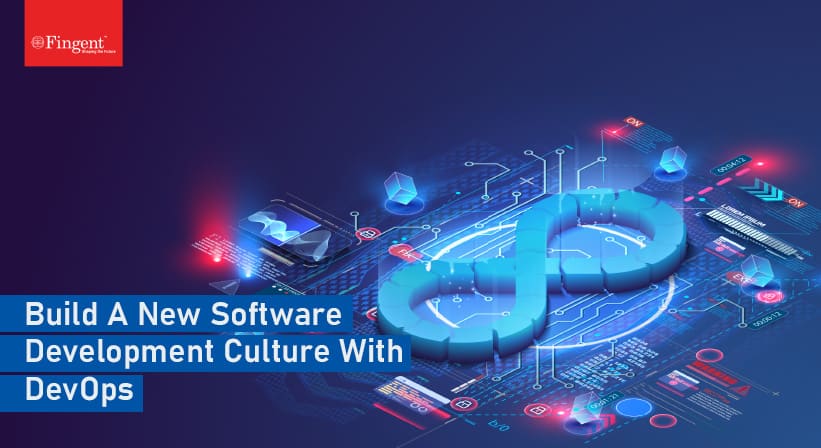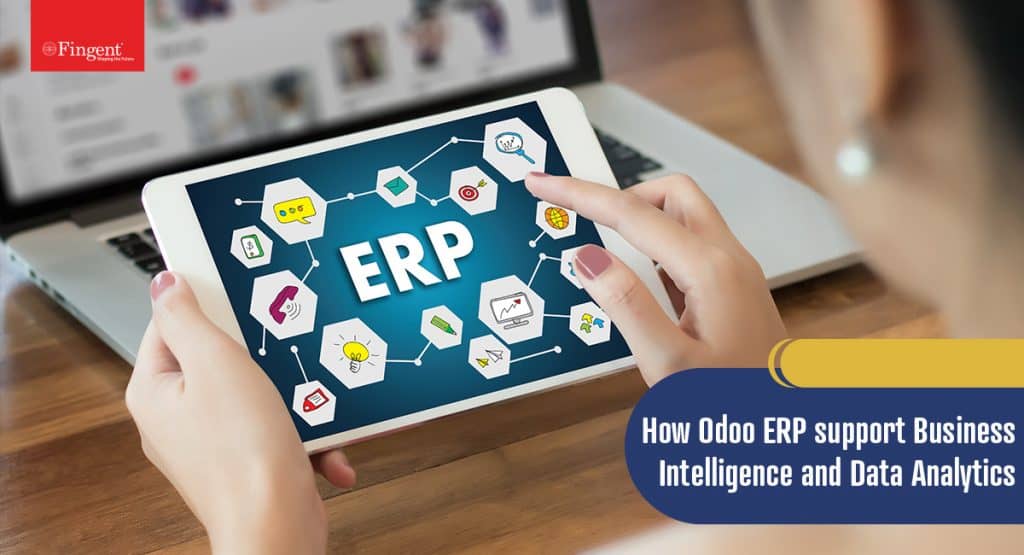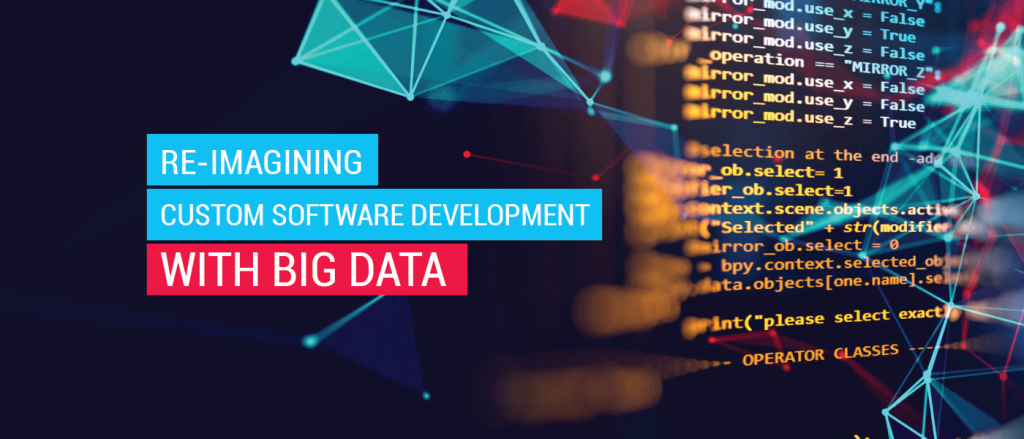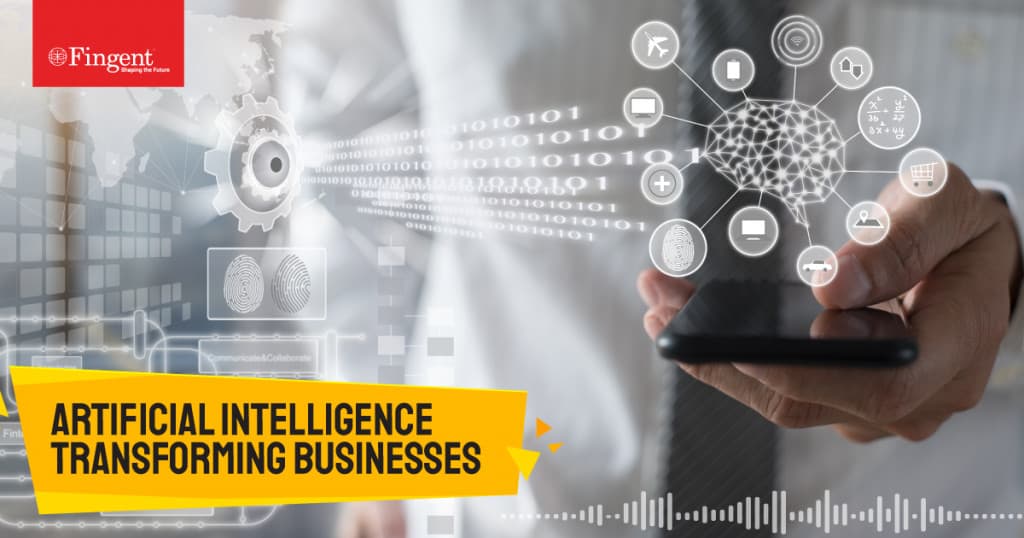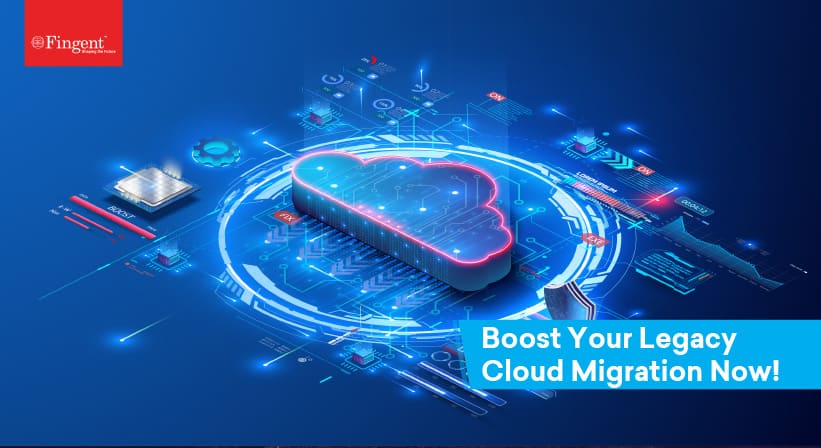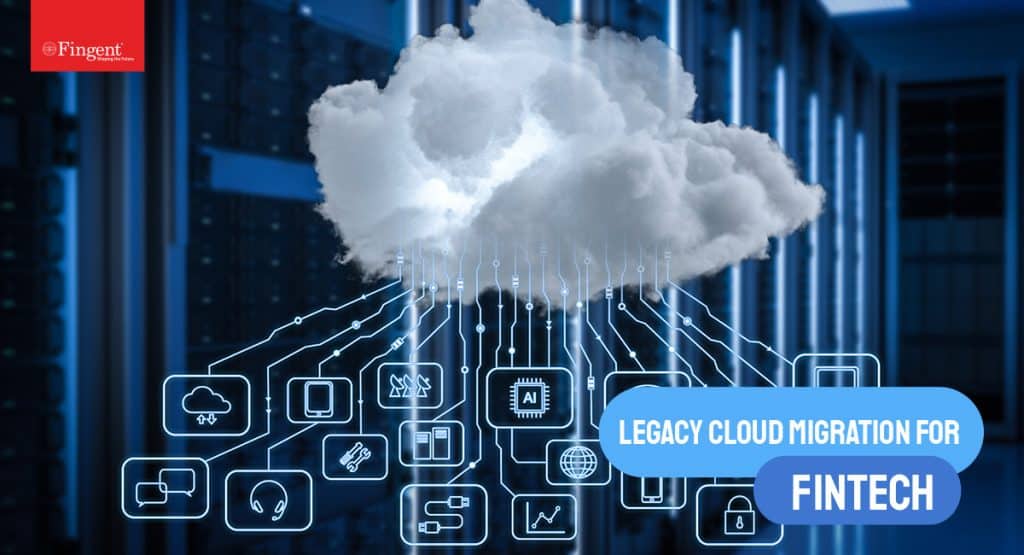Category: Digital Transformation
DevOps is a fusion of development and operations that come together to form a technology that spreads rapidly throughout the technical community. The main objective of DevOps is to decrease the amount of time the company takes to deploy a program.
Before DevOps, most companies leveraged Agile methodology. However, it did not take care of the operations aspects and so gave rise to DevOps. In combination with Agile methodology, DevOps gave importance to communication between the development and operations team during all stages of the development cycle while developing software. This blog will take you briefly through why you need to consider DevOps and what are the upcoming trends in this technology.
Objectives of DevOps
The main goal of DevOps is to improve the collaboration between teams to;
- Improve the frequency of deployment
- Reduce time to market (TTM)
- Minimize the failure rate of new releases or productions
- Reduce the lead time between fixes
- Improve mean time to recovery
Read more: Test Automation In DevOps For Expediting Software Development
Statistics and Market Changes That Prove the Effectiveness of DevOps
DevOps includes different cross-functional teams such as business analysts, developers, QA practitioners, operations personnel, security specialists, suppliers, and partners. It not only helps seize the market opportunities quickly but also reduces time to include customer feedback. It also helps change and advances the relationship by improving the communication and collaboration between different business units. Here’s a look at a few statistics on how enterprises are driving efficiency using DevOps.
- 2x as likely as lower performers to achieve the goals across financial and non-financial measures.
- 46x more software deployments than their competitors
- 96x quicker recovery from failures
- 440x faster lead time for changes
- 96x faster recovery from failures
- Better customer satisfaction and operational efficiency
- DevOps teams spend about 21% less time resolving issues compared to traditional IT ops teams
- DevOps teams spend 33% more time improving infrastructure than traditional teams
- DevOps teams require 60% fewer teams per week to manage support cases than traditional teams
From shopping to banking to entertainment, every organization and industry is shifting towards accurate, practical software deployment and involves low maintenance costs. Additionally, emerging trends of AI and MI are steadily gaining momentum. Both technologies can process a large amount of data and perform menial tasks, help the IT staff do more targeted work, and help learn patterns, anticipate problems, and develop solutions.
Further, the adoption of agile frameworks and cloud technologies and the digitization of enterprises are some of the factors driving the market’s growth across the globe.
That said, with the penetration of IoT, DevOps is more in demand owing to the co-dependence of the hardware and the embedded software that runs on it. Moreover, Global Market Insights reports the DevOps Market size exceeded $4 billion in 2019 and expects to grow at over 20% CAGR between 2020 and 2026. So, if you don’t upgrade to DevOps, you are more likely to lose out on several opportunities that can help drive business growth.
Read more: DevOps: Building A New Culture Of Software Development And Delivery
DevOps Market Trends
1. Automation
The Puppet 2021 State of DevOps report revealed that highly evolved firms are more likely to have implemented extensive automation. The report also stated that 90% of respondents with highly developed DevOps practices reported that their teams had automated most repetitive tasks.
These initiatives will only continue to have more urgency in their adoption for enterprises that are yet to evolve fully. To make these initiatives work, teams will have to integrate Artificial Intelligence and Machine Learning alongside automation of the entire process. Incorporating machine learning into the delivery lifecycle helps enterprises to understand problems such as blockages or capacity issues. This information can be used to mitigate problems whenever they arise. In addition, the AI-based predictive analysis enables the DevOps pipeline to anticipate problems and provide potential solutions.
2. Application Performance Monitoring (APM) Software
APM software is essential as it helps provide rapid feedback to developers during deployments. It includes:
- Front-end monitoring- This helps observe the behavior and performance of user interactions.
- Application discovery, tracing, and diagnostics(ADTD) – This analyses the relation between the web and application servers, infrastructure, and microservices.
- AIOps-enabled analytics- This helps detect patterns, anomalies, and causality across the lifecycle.
APM plays a key role in minimizing the Mean Time to Repair (MTTR) and improving the user experience. APM capabilities help DevOps teams to understand the business processes better, provide insights into business operations, help with problem isolation and prioritization.
3. DevOps Security
Security is one of the most overlooked aspects of any organization. According to Gene Kim, DevOps researcher, for every 100 developers, there is only one security engineer.
However, with the pandemic changing many things and people working from home, more services are being run in the cloud, leading to more attacks. So, the way a developer writes the software and deploys it to its destination must be secure.
To get serious about prioritizing security for DevOps, you need to;
- Understand security goals
- Have proper cloud vulnerability scanners
- Secure the code with standard tests
4. Site Reliability Engineering (SRE) and DevOps
As per reports from Google Cloud’s 2021 Accelerate State of DevOps, SRE and DevOps will complement each other in years to come. SRE techniques such as service-level indicators will enhance the objectives of the DevOps team.
The report also indicates that teams who excel at modern practices are 1.4 times more likely to experience greater software delivery and operational performance than those who are less mature with operational practices. Such teams are also 1.8 times more likely to have better business outcomes.
5. The Rise of DevSecOps
As organizations embrace Kubernetes, serverless, and other cloud-based technologies, cloud-native security will become more critical. As a result, teams will need new tools and processes to protect assets making DevSecOps indispensable.
DevSecOps is a fusion of security and compliance testing into the development pipeline. It should:
- Integrate into the life cycle seamlessly
- Provide transparent results to the stakeholders
- Improve the agility of developers
- Help the teams to stay within their development environment
- Offer security protection at runtime
Read more: A Complete Guide On Software Product Development Stages And Life Cycle
Why Choose Fingent as Your DevOps Service Provider?
With robust DevOps services, Fingent ensures rapid on-boarding of applications by automating the end-to-end delivery pipeline and facilitating continuous development and integration across leading cloud platforms. It provides faster time to market, increased efficiency, and reduced costs. Our DevOps solutions will help align your organization’s goals rapidly and reliably to ensure high-quality software-based products and services.
So, if you’re looking forward to deploying DevOps to improve your organization’s speed, agility, and gain a competitive advantage, then connect with our experts today!
Stay up to date on what's new

Featured Blogs
Stay up to date on
what's new



Talk To Our Experts
Extended Reality (XR), is an umbrella term that encompasses immersive technologies – AR, VR, and MR that merge the physical and virtual worlds. While XR technologies are still widely used for gaming, social media and entertainment, it is being implemented extensively in industries and supplementing humans in unimaginable ways. Experts believe that the XR market will grow from 33.0 billion dollars in 2021 to 125.2 billion dollars by 2026, at a CAGR of 30.6%. This blog will take you through the top 6 reasons why your business needs to implement the rising capabilities of Extended Reality!
What is Extended Reality?
When put simply, XR is reality tech that covers VR, AR, and MR to extend reality by merging the real and virtual worlds. Here’s a quick look at what VR, AR, and MR are!
- Augmented Reality(AR): AR connects the physical environment with the virtual world through tablets, smartphones, smart lenses, and AR glasses to augment real-life scenarios.
- Virtual Reality (VR): This technology merges the physical environment with the digital one to create a whole new virtual world. Virtual Reality headsets and head-mounted displays help provide immersive experiences of the digital world.
- Mixed Reality(MR): With the help of MR headsets, mixed reality brings together the virtual and the physical environments to deliver unique experiences.
The term Extended Reality first popped up in the 1960s, when Charles Wyckoff filed a patent for his silver-halide XR film. The film was intended for photographing bright light events such as nuclear explosions. More recently, XR has moved into the mainstream with a few enterprises leveraging it to launch applications aimed at extending the customer experience.
Read more: Augmented Reality, Virtual Reality, and Mixed Reality Detailed with Real-life Examples
Industries Transformed by Extended Reality
AR, VR, and MR are developing at a rapid rate and transforming the way businesses are operating, communicating, and collaborating. Here are some of the business industries that have undergone a drastic change with these technologies.
- Marketing and advertising
- Healthcare
- Education and training
- Manufacturing and engineering
- Real estate
- Retail
- Gaming
- Art
XR offers endless possibilities and so any field can benefit by leveraging XR into their business processes.
Reasons Why You Need to Leverage XR Technologies for Your Business
1. Cultivates brand awareness
With changing customer demands and fierce competition, it is getting difficult to attract potential customers. Simply launching new products and services is not enough if you want to grow your business.
XR technology helps deliver a unique experience for users, foster consumer loyalty, and build brand awareness. For example, Gucci offers AR-fueled apparel and accessories try-on app that encourages users to try their accessories before buying thereby providing a stand-alone experience for users.
XR technology not only helps capture the attention of your customers but also promotes a positive experience with the brand.
2. Better customer experience
Customer experience is important for the success of any marketing strategy. XR’s ability to deliver immersive experiences will help you connect with your customers better and establish deeper emotional connections. XR helps transport your customers to different places and even attend live events without leaving the comfort of their homes.
L’Oreal leveraged AR technology to help their customers ‘try’ skincare products before buying and saw its conversion rate triple.
3. Increases customer engagement
As per a report by Deloitte, 90% of the companies are implementing AR and VR technology in their business. Another report reveals that 40% of customers are willing to pay more if they can experience it through Augmented Reality technology. Yet another report reveals that 58% of customers are more likely to buy a product if they have tried it out.
These statistics suggest that extended reality technology must be implemented in your business if you want to grow. XR allows customers to get detailed information and visualization about the products and services. It enables them to try out various products in various combinations and even test patterns and colors before purchasing them.
With XR technology, brands can increase engagement rate significantly and attract more customers and also provide them with a positive experience.
Read more: Augmented Reality Vs Virtual Reality – The Future Technology
4. Offers convenience
There’s no denying that online shopping is convenient and now with the pandemic forcing people to stay indoors most of the time, it is only becoming more popular. XR helps brands improve the shopping experience and also makes it less time-consuming. It helps consumers find what they are looking for faster and eliminate uncertainty from purchase decisions.
IKEA, for example, allows consumers to use their Place app and place a piece of furniture in their home using their phone. This improves the level of convenience, delivers a better customer experience, and eliminates any uncertainty before purchase.
5. Smarter Libraries
Data is the key to thrive today’s digital era. XR technologies place data in the context such that users can get better results.
For instance, you can use smart glasses to get a visual walkthrough to understand the true impact of the data collected instead of poring through spreadsheets and dashboard metrics for hours. XR technologies can help you make better and informed business decisions.
6. Create positive associations
Extended Reality provides brands with endless opportunities to create and implement emotional campaigns for their products. Based on the visual cues you include in your brand campaigns, you could encourage consumers to conclude your brand’s qualities.
XR helps connect with your audience in a way that activates their emotions and thus helps build a positive brand association. This will ensure consumers prefer your brand over others and establish loyalty. North Face, for example, launched an immersive VR experience of the Nepal landscape to its customers to identify with the brand’s identity.
Read more: Accelerating AR/VR Adoption Among Customers
Takeaway
Today, customers expect an intuitive experience from their brands and XR is becoming the new form of a conversation between brands and customers. Using immersive technologies, enterprises can nurture a culture of digital transformation and increase efficiency and profitability in the digital space.
Driven by immersive technologies, we at Fingent can help your brand increase awareness, engagement, and conversion. We have systems in place to help support large-scale communication. If you have a project in mind, we can help convert it to reality. Call us today!
Stay up to date on what's new

Featured Blogs
Stay up to date on
what's new



Talk To Our Experts
A study by Havard Business Review reveals that one in every six projects costs over 200% of the estimated amount, and 70% of IT projects face delays. Despite the availability of flexible methodologies and multiple resources, companies are still struggling and wasting a lot of money every year to handle project management challenges.
While it is the project manager’s responsibility to ensure smooth working of all the processes, they are always loaded with tons of duties such as budgets, allocating resources, scheduling tasks, and more. Moreover, if there are several projects running, it can become overwhelming for the project manager to personally look into every collaboration happening in the business. This blog will take you through the major challenges faced in project management and how deploying Odoo technology can help you tackle these challenges and elevate your performance.
Read more: What’s New In Odoo 15: The Most Anticipated Upcoming Version Of Odoo
Challenges faced by the project managers
1. Lack of communication
According to Deloitte, 32% of professionals believe that communication is the biggest issue of project management. A transparent method of communication will help build credibility amongst your stakeholders and involve them in the process. Miscommunication can affect teamwork and even cause conflicts among team members, causing a delay in the project. To avoid these pitfalls, project managers can rely on collaborative and project management software available in the market.
2. Budgeting issues
Financial issues are one of the biggest hurdles of effective project management. Managers can avoid complications a project may likely face by efficient cost management and achieving quicker results.
3. Lack of clarity on goals and success
According to a study, 39% of projects fail due to a lack of project planning and defined goals. Hence, It is vital to set clear goals for the success of any project. Additionally, a project manager needs to set up milestones and quality tests to quantify the progress of a project. A predefined set of objectives and goals will help project managers defend their vision before the upper management and customers.
4. Scope creep
Scope creep, also known as requirement creep or even feature creep, refers to how a project’s requirements increase over a project’s life cycle. While scope creep can be beneficial in some cases, it can also have a negative impact on your business. Clients who have vague requirements and don’t know what exactly they want can be challenging for both managers and the project team.
5. Inadequate risk management
Typically, projects have several variables that create many possibilities and rarely go exactly the way it was planned. Not having the foresight to identify any critical situations or making up contingency plans can be a significant setback for any project. All these challenges demand the interplay of intuitive project management software to ensure real-time tracking and organizing of projects. Over 90% of high-performing companies are switching to project management applications to complete their projects professionally. Project management software helps automate time-consuming tasks and manage a large team of professionals working within. Additionally, the software can also help businesses put data straight and accomplish remarkable results without any delays.
Though you can find wide choices of project management tools in the market, you will have to pick the application that suits your business workflow. Make sure that the chosen project management software for your business includes the following features.
- Project Planning and Scheduling
- Project Budgeting
- Team Collaboration
- Time Tracking
- Reporting
While the project management tool may offer several other features too, the above said are essential for any project management. A perfect solution to all project management-related problems is Odoo. Whether you want to add tasks/subtasks under a project or assign tasks to your team members, Odoo helps you achieve it seamlessly.
Read more: How Odoo ERP Helps Leverage Business Intelligence and Data Analytics
Benefits of Odoo’s Project Management Module
1. Mobile friendly
Odoo can be installed on a mobile phone, making it easy to use while on the go. Given the pandemic situation, this feature is a boon. It allows team members and the managers to remain connected and track the projects from anywhere. That said, the Odoo project module allows you to get a large screen view along with a chatter facility using computers.
2. Customizable
Odoo allows you to customize your projects easily. From renaming projects to rescheduling stages, the Odoo module enables you to achieve it hassle-free. Additionally, its Filters and Groups features help you track the projects and tasks.
3. User-friendly
Odoo is highly user-friendly and provides a Kanban view to have a quick glance at the projects based on the tasks and stages. For example, to check the time and deadline, you can use the Gantt Chart, Graphic, and Pivot view.
4. Enhanced communication support
With Odoo, you can integrate email and use your email alias. This feature allows managers or customers to automatically create a task by simply sending emails to the specified alias. All those who receive the communication will become a part of the task. Additionally, it supports sending alerts to customers based on the activities. Odoo project also allows you to chat with the team members by just clicking on the team member’s image. It not only saves time but helps collect in real-time.
5. Improved customer management
Odoo project module helps you generate customer tickets which allows you to track the progress of the project and interact with the project team.
6. Report generation
Odoo generates reports in an easy-to-grasp format. Options such as Filters, Measures, and Group-by help the team to manage the reports.
7. Easy integration with other modules
The project module integrates easily with other modules such as Calendar, Timesheet, Accounting, Expenses, etc. It helps you to manage accounts, plan expenses, track working hours, and plan activities.
Read more: 6 Ways Odoo ERP Customization Can Benefit Your Business
How can Fingent help?
Undeniably, the Odoo Project Management module is a must-have solution for all businesses. We help businesses achieve their strategic goals and drive better revenue with our ERP development services. We have expertise in developing user-friendly applications for businesses across various industries.
If you’re looking to reduce your business complexities and drive growth with Odoo implementation, contact us.
Stay up to date on what's new

Featured Blogs
Stay up to date on
what's new



Talk To Our Experts
Undoubtedly, data is what we see almost everywhere, and it is enormous. And it doesn’t stop there, it is growing continuously at a level beyond imagination! Let’s have a look at how it has changed over the years.
A look into how Data and AI transformed in years!
In the 1950s, when there were fewer technological developments, companies would collect the data(offline) and analyze it manually. This was also backed by limited data sources that made it time-consuming in obtaining the results.
The mid-2000s paved the way for changing the world for the better and it was during this time the term “big data” was coined. Almost every business that had something to do with digital infrastructure started looking for ways to use the large data and come up with meaningful insights.
This era also saw the invention of tools like Data mining, OLAP, etc., taking technological advancements to the next level. In general, the internet gained immense popularity not only for organizations but also for households. During this time, technology became more advanced and provided automated options for managing data, and data analysts could analyze data, trends, etc., and provide better recommendations.
Google, Amazon, Paypal, and others also made a mark causing the volume of data to reach newer heights. However, all this posed a storage and processing problem.
The late 2000s to early 2010s saw a surge in Facebook, Twitter, Smartphones, and connected devices. The companies used improved search algorithms, recommendations, and suggestions driven by the analytics rooted in the data to attract their customers. Enterprises also realized that would have to deal with unstructured data and so they got familiar with databases such as NoSQL. New Technologies were introduced for faster data processing and machine learning models were used for advanced analytics.
Now, businesses are a step ahead and using automated tools using cloud and big data technologies. With cloud platforms, it is now easier to enable massive streaming and complex analytics.
Read more: 5 ways in which big data can add value to your custom software development
Having seen how data has evolved over the years, let’s have a look at how Artificial Intelligence has transformed in the last generation.
In 1950, a British mathematician and WWII code-breaker- Alan Turing was one of the first people to come up with the idea of machines that could think. To date, the Turing Test is used as a benchmark to determine a machine’s ability to think like a human. While this notion was ridiculed at the time, the term artificial intelligence gained popularity in the mid-1950s, after Turing’s death.
Later, Marvin Minsky, an American cognitive scientist picked up the AI torch and co-founded the Massachusetts Institute of Technology’s AI laboratory in 1959. He was one of the leading thinkers in the AI field through the 1960s and 1970s. It was the rise of personal computers in the 1980s that sparked interest in machines that think.
That said, it took several decades for people to recognize the true power of AI. Today, Investors and physicists like Elon Musk and Stephen Hawking are continuing the conversation about the potential for AI technology in combination with big data could have and how it could change human history.
AI technology’s promising feature is its ability to continually learn from the data it collects. The more the data it collects and analyses through specially designed algorithms, the better the machine becomes at making predictions.
Impact on business
AI and big data have an impact on businesses like never before. Whether it is workflow management tools, trend predictions, or even advertising, AI has changed the way we do business. Recently, a Japanese venture capital firm became the first company ever to nominate an AI board member for its ability to predict market trends faster than humans.
On the other hand, data has been the primary driver for AI advancements. Machine learning technologies can collect and organize a large amount of data to make predictions and insights that otherwise cannot be achieved with manual processing. This not only increases organizational efficiency but reduces the chances of any critical mistake. AI can detect spam filtering or payment fraud and alert you in real-time about malicious activities.
AI machines can be trained to handle incoming customer support calls thereby reducing costs. Additionally, you can use these machines to optimize the sales funnel by scanning the database and searching the Web for prospects that have similar buying patterns as your current customers.
Read more: The Future of Artificial Intelligence – A Game Changer for Industries
5 trends in data and artificial intelligence that can help data leaders.
1. Customer experience will be the key
Supply chain and operating costs will mean nothing if you are unable to hold on to your customers. Today, businesses have to be more connected with their customers to be on top of the game. From in-person and digital sales to call centers, companies will have to collect data to have a holistic view of the customer. Businesses must consider other forms of interaction such as using voice analytics to understand how customers interact with call centers or chatbots.
2. Leveraging External data
External data can provide early warning signs about what’s going on. To make external data work, companies must start with a business problem and then think about the possible data that could be used to solve it. That said, companies might need to modernize data flows to leverage external data.
While many businesses have started leveraging external data, some companies haven’t leveraged it yet as they are either too focused on internal data or finding it difficult to transfer data.
A prime example of brands that used external data is Hershey’s Chocolates. It leveraged external data to predict an increase in the number of people using chocolate bars for Backyard S’mores and a decline in sales for smaller candy bars for trick-or-treating.
3. CDOs leading the way towards a data-driven culture
Introducing any new technology without training your employees to adapt and figure out new skills and processes will not be effective. According to Cindi Howson, chief data strategy officer at analytics platform provider ThoughtSpot, Chief Data Officers (CDOs) need to take the lead and empower their employees and the organization to gain time and efficiency with data. Also, CDOs will have to make sure to upskill employees to take full advantage of new technology.
4. Multi-Modal learning
With advances in technology, AI can support multiple modalities such as text, vision, speech, and IoT sensor data. All this is helping developers find innovative ways to combine modalities to improve common tasks such as document understanding.
For example, the data collected and processed by healthcare systems can include visual lab results, genetic sequencing reports, clinical trial forms, and other scanned documents. This presentation, if done right, can help doctors identify what they are looking at. AI algorithms that leverage multi-modal techniques (machine vision and optical character recognition) could augment the presentation of results and help improve medical diagnosis.
5. AI-enabled employee experience
Business leaders are starting to address concerns about the ability of AI to dehumanize jobs. This is driving interest in using AI to improve the employee experience.
AI could be useful in departments such as sales and customer care teams that are struggling to hire people. Along with robotic process automation, AI could help automate mundane tasks to free up the sales team for having a better conversation with customers. Additionally, it could be used to enhance employee training.
Read more: 9 Examples of Artificial Intelligence Transforming Business Today
Conclusion
Leveraging data and Artificial intelligence has grown due to the pandemic and businesses are digitally connected than before the lockdown.
At Fingent, we equip business leaders with insights, advice, and tools to achieve their business goals and build a future-proof organization. To learn more about how we fuel decision-makers to build successful organizations of tomorrow, contact us.
Stay up to date on what's new

Featured Blogs
Stay up to date on
what's new



Talk To Our Experts
With the ongoing COVID-19 pandemic, the healthcare industry is spiraling at an unexpected speed and is continuously inventing healthcare solutions to drive streamlined operations. Medical organizations are now largely depending on custom healthcare software solutions to maintain medical history, electronic health records, patient’s personal information, and other medical data to provide better patient care and health services. This blog will take you through why your healthcare organization needs to invest in custom healthcare software development, and how it’s beneficial to outsource it!
What is custom healthcare software development?
Today, healthcare is driven by technological innovations such as big data, electronic patient record systems, interoperability, and machine learning. The need for this is to provide better patient experiences and improve health outcomes. To achieve this, there is a need for professionally designed tools and solutions that can help healthcare providers to deliver patient-first and cost-effective care.
Custom healthcare software development is the process of creating web or mobile apps for medical professionals so they can interact with patients better, use medical data analytics, and access patient health records.
Examples of how custom software development has transformed the healthcare industry include;
- Tools such as Hospital Management Systems (HMS) or Hospital Information System (HIS) are comprehensive integrated solutions that handle different aspects of hospital or clinic’s workflow efficiently.
- An Electronic Health Record (EHR) system collects a patient’s data and history and stores it in a digital format that makes sharing across different healthcare systems easy.
- Mobile apps and wearable devices are serving several health aspects.
Read more: Augmented Reality in Healthcare: The Industry Future!
Key benefits of custom healthcare software
1. Tailor-made solution
Software solutions built specifically catering to your organizational needs help deliver better customer services. Especially when it concerns providing patient-care services, it is always recommended to invest in custom or tailormade solutions. An off-the-shelf or packaged solution, in comparison to a custom software solution, may or may not be able to meet your organization’s requirements or even work well within a specific type of facility. A custom software solution will help solve your business-specific complexes and will help meet your business goals.
2. Streamline processes
Undoubtedly, technology enables us to get our work done efficiently and more accurately. A custom software solution can have a far-reaching impact. It frees your staff to allow them to focus on patient care.
3. Personalized care
Today, patients want to understand their health on their own and expect personalized services from their healthcare provider. This is why there is an increasing demand for telemedicine, at-home testing kits, and health apps.
4. Enhanced security
Custom healthcare software solutions are built in compliance with the industry standards and guarantee that personal data stays secure and confidential. An app must comply with Open Web Application Security Project standards and other certifications, to be approved.
When it comes to creating custom healthcare software, organizations can;
- Leverage any open-source platform to create a customizable solution without the need for coding
- Outsource the entire custom software development process to a reliable development agency.
Read more: Why Healthcare Prefers Prescriptive Analytics Over Predictive Analytics
Advantages of outsourcing healthcare software development
1. Economical and effective
By outsourcing to a third-party offshore company, you can save a lot of costs. It helps save largely on the cost of developing application infrastructure, recruiting professionals, training the recruits, and deployment and pre-installation set-up costs. Most service providers use advanced technology that would fit your budget.
2. Experienced team
While some projects require a large pool of software developers others may not. In such cases, it may be difficult to hire software developers and then relieve them after completing the work as it involves a huge cost to hire, set up infrastructure, and team. Therefore, outsourcing custom healthcare software development gives you the leeway to scale up or down resources as per your project requirements.
3. Agile and scalable solutions
In-house healthcare developers are usually burdened with several other tasks which cause them to lose focus and compromise on the delivery of the app. Collaborating with a third-party agency will provide you with the flexibility of managing the resources and whenever you need them. This will also help you include scalable software developers to build an app that is more agile and consistent.
4. Quick time to market
Outsourcing the custom development task will give you access to experts from healthcare domains to develop your applications. This will ensure your app be superior,well-grained, and reach the market faster so patients can be treated faster.
5. Increased productivity
As offshore developers are qualified and talented enough to develop your app, you won’t have to burden them with briefings and preparations. This will allow you to focus on improving the critical and core healthcare services of your organization thus improving the results significantly.
Read more: Healthcare Analytics Reaches New Heights with SAP HANA
Cost of outsourcing custom healthcare software development
When it comes to the healthcare industry, the average cost of an experienced developer is not cheap. That is why 59% of global companies outsource software development. While the costs vary from country to country, you will still save about 40-70% of the total costs. For example, the average hourly cost for a software developer in the US is $65–$130 per hour while the hourly cost of offshore developers in Asia and Africa is $20–45.
Why choose Fingent?
If you need custom healthcare software for your organization, Fingent is your trusted partner.
- We have a pool of experienced and skilled developers who can help you identify the right solution for your business complexities.
- Our agile methodology of development ensures client involvement at every stage so that the solution is scalable, cost-effective, as well as caters to specific client requirements.
- We offer transparent offshore development services in terms of overhead costs and recruitment fees.
In the wake of the COVID-19 pandemic, the need for custom healthcare software development cannot be denied. Our developers are not only affordable but can add much value in terms of talent and skill to your organization. Connect with our experts today!
Stay up to date on what's new

Featured Blogs
Stay up to date on
what's new



Talk To Our Experts
Everyone in the manufacturing world faces the fear of going bust if they do not adopt digital transformation. That is a given and yet we can all agree that digital transformation doesn’t happen overnight.
Currently, enterprises encounter several challenges on their digital transformation journey. One among them is to learn to create and use data through a product life cycle that creates flexible manufacturing processes. Such processes can respond instantly to changes in demand at a low cost to the firm without damage to the environment.
Are you a manufacturer with global aspirations? Do you need to accelerate lead times and product customization? If so, then you may encounter these common business challenges:
- Need for critical infrastructure in remote locations.
- Need for tailored and full-custom design with high quality and ruggedness that fit your specific requirements.
- Need for a simplified supply chain that enables you to get to market quicker and realize faster time to revenue.
- Need to maximize efficiency in the supply chain and ultimately reduce lead time.
- Need to ensure product longevity by providing the same time-zone technical support. And to provide personal support services with the ability to decrease lead times.
Technologies such as 5G, edge computing, and cloud have been pushed further into the limelight especially over the past year, in the wake of the pandemic. As enterprises react to the changing world, these technologies are now emerging at the forefront as a necessary component of network infrastructure.
Read more: Take a Look at How 5G is Reinventing the Way We Work
How Do 5G, Cloud, And Edge Computing Unlock Enterprise Opportunities?
5G, cloud, and edge computing have become major areas of interest and investment at the enterprise level. They provide real-time insights, analytics, and business benefits that can be used once mission-critical latency issues are resolved.
5G, Edge Compute, and Cloud technologies are an emerging set of solutions. When orchestrated together these can enable a spectrum of benefits that are contingent on industry, maturity, and technology. These are complementary technologies that work together for most use cases.
What unlocks the enterprise opportunities is to marry new and existing technologies to create machinery that is as proactive and predictive as the best workers. Edge computing, cloud, and 5G connectivity can be combined to supercharge real-time decision-making and improve quality assurance throughout the supply line.
How would you like it if you can predict the future? Or if you could see the possible problems and correct them before they happen? 5G, edge computing, and cloud promise to give you that ability! These technologies are in a symbiotic relationship.
Cloud contains unlimited resources. Powered by 5G, AI models can continuously update and adapt to situations within the enterprise. This virtuous feedback loop delivers real-time results. Plus, it delivers ongoing improvements over time, as the entire system across the enterprise learns and improves from prior experiences.
This can greatly improve the productivity of your employees. Also, it can save costs tremendously as it can reduce downtime. Here are some specific ways in which 5G, edge computing, and the cloud can benefit the industry.
Read more: How 5G Will Boost Enterprise Investment In Cloud
Cloud For Responsive Resilience
In the past when enterprises needed to deploy applications using their equipment, they had to ensure that their server, memory, and processing power were equipped to run the application efficiently. Any misjudgment could have a cascading effect throughout the enterprise. However, the cloud provides infinite opportunities.
What enterprise opportunities does this provide? It provides what all enterprises need more than ever: increased speed, resilience, and flexibility.
Bringing cloud intelligence to their IT networks can be very beneficial in performing preventive maintenance, making decisions in real-time, and keeping data more secure. It allows for automated decision-making while saving bandwidth costs.
By leveraging cloud capabilities, enterprises can reduce overall costs. They can benefit from automated one-click deployment and realize higher value from data. This contributes to resilience. Resilience is more important to enterprises that are struggling during major disruptions like the pandemic.
Read more: Why It’s Time to Embrace Cloud and Mobility Trends To Recession-Proof Your Business?
5G Can Help Process Information Across The Enterprise
5G technology enables enterprise connectivity, remains powerful, and is constantly updated. 5G enables all the machines and modules to function at the same speed, reliability, and security as we expect from our phones. In other words, it prevents loss of time due to hanging or buffering associated with the mobile networks.
5G will deliver multiple benefits to those who adopt it:
- Provides ultra-reliability and security. It is far more efficient than any wireless mechanism.
- Since 5G eliminates the need for wired connectivity, it enables a high-speed environment with higher flexibility and lower latency.
- Provides the ability to handle mass customization and personalization.
- 5G augments IoT capacity to support device density and data volume
- Improves productivity as it reduces failure rates.
Read more: Top Business Drivers that Boost Legacy Cloud Migration
Edge Computing Can Help Deploy Technology With Unhindered Network Performance
Edge computing can reduce pressure on data centers and service provider networks. Plus, it preserves bandwidth and brings real-time processing close to users and their devices. Here are specific ways in which edge computing can prove advantageous:
- Maintain competitive edge: Edge computing can provide the ability to use data from various machines, processes, and systems to adapt the manufacturing processes in real-time. It can support precision monitoring of the production line. This enables swift operational responsiveness to unforeseen events. Additionally, it can gather data from connected systems and devices in real-time. Hence, manufactures can now analyze data at the point of creation leading to faster and more informed decision-making within the enterprise.
- Helps seize the opportunities that data and performance-intensive technologies present: Edge computing can empower employees and streamline workflows. It can enable smarter supply chains and improve employee safety and productivity.
- Documents at fingertips: Edge computing can provide workers easy access to documents, new workflow instructions, real-time videos and images, and new product updates. This can increase greater efficiency despite social distancing protocols in the current scenario.
Gain a Competitive Edge with Next-Gen Technologies
With IoT deployment on the rise, enterprises are increasingly adopting 5G, cloud, and edge computing. These technologies provide a competitive advantage by reducing unexpected downtime issues. Hence, the enterprises enjoy improved overall efficiency.
The convergence of these technologies can increase agility and resilience. These technologies can be leveraged to establish enhanced productivity, customer satisfaction, and increased ROI. Hence, 5G, cloud, and edge computing technologies must form an important part of any post-pandemic strategies. You must be eager to get started on gaining that competitive edge. Let’s get talking and make that happen!
Stay up to date on what's new

Featured Blogs
Stay up to date on
what's new



Talk To Our Experts
Businesses today need a reliable, effective, and user-friendly support system to tackle the rapidly evolving market changes. Odoo ERP offers features and easy-to-use models that enable businesses to simplify their processes, reduce costs and improve efficiency. It also offers free and paid versions with an outstanding integrated system providing businesses with reasonable flexibility and scalability. With these and many other unique capabilities, Odoo ERP is turning into a hot topic amongst top companies today! With the release of Odoo 15, expectations have risen even more! Businesses are strategizing ways in which they can deploy the improved capabilities of Odoo 15 to enhance their business growth. This blog will take you through what’s new in Odoo 15 and how you can leverage these enhanced features for your business.
What is Odoo 15?
The all-new Odoo 15 is likely to launch in October 2021. It will be released in the Odoo Experience Meet which will be conducted virtually due to the COVID-19 pandemic prevalent in many parts of the world. Odoo 15 is expected to feature advanced tools that can help improve business performance and efficiency. Odoo 15 is believed to be the ultimate business solution with its latest web-based integration and superior architecture.
Read more: 5 signs which imply that your business needs Odoo ERP
A Look Into the Expected Features of Odoo 15
1. New import screen
Odoo 15 is expected to extend the experience with its new importing screen feature. This new import screen feature includes a menu to handle cash rounding making it seamless for accounting and generating the invoices.
This feature is expected to be available in all the required modules and functional tabs.
2. Capable options in Pivot and Graph views
Odoo ERP software provides data representation with Pivot and Graph views. The Odoo 15 version will most likely allow you to edit and adjust the graph using Odoo studio. With this, you can extend the representation of the data to valuable insights for improved decision-making and analysis.
3. New HTML Editor
Odoo 15 is expected to include an attractive new HTML editor. While it will be similar to text editors, it will include HTML codes. So, many developers are using it to extend productivity.
4. Coupon and Promotion Program in POS
While the previous versions of the Coupon and Promotions were exclusively for Sale and eCommerce websites, the Odoo 15 coupons is created to support both eCommerce as well as POS.
The feature will be available in the POS settings. While under the product menu you will have the option to create Coupons and Promotions based on your business needs for later use. The cashier can click on the Enter Code button from the POS and apply the Coupons for Point of Sale Order which will be reflected in the customer’s invoice.
Considering the previous trends of Odoo releases, Odoo 15 will have an enhanced user experience that is sure to blow your mind.
5. New command and command editor
Odoo 15 will include the new command and command editor. It will help handle invoices in accounting configuration.
Read more: How Odoo ERP Simplifies Sales Management in Your Organization
6. CRM
The new feature in the CRM is expected to improve managing leads and well assigning salespersons.
Using this feature, leaders can allocate the desired team members to activity or lead in the Odoo 15 CRM module. This will augment the organization’s sales activity and the team members’ collaboration for the leads.
7. Project burn down chart
This feature will be introduced in the Project section. Here, you will find an easy reporting tool to view the actual chart of the project’s progress phase-wise.
Additionally, the chart will help identify the current trend and any delay for the project deliverable.
8. Share buttons
The share functionality will be included in the customize section of the eCommerce website platform.
Typically, the share button allows the products to be shared on different social media platforms through the website portal. Using the new functionality, you can share the details on the platform to finalize the product.
9. Purchase dashboard
The purchase dashboard gives an amazing perspective for the dashboard comprising all the purchase values and graphs. The dashboard provides the needed information about the tax and untaxed-based total. A click on the reporting tab of the Odoo 15 dashboard will seamlessly get you a detailed report.
10. Website gift card
This option allows you to sell the card on eCommerce. This functionality creates unique codes for the sale of Gift Cards. These unique codes are given to the customers either via email or physically.
Odoo apps or modules help create multiple unique codes for the purchase of a gift card. Odoo 15 is likely to upgrade these features.
Additional features
In addition to the above-mentioned features, Odoo 15 is likely to incorporate these features as well.
- Business Intelligence Tools
- A newly designed eCommerce product page
- Formulas of BOM, %of final products, etc., to improve the process manufacturing.
Read more: Why Choose Fingent as Your Odoo ERP Partner
Conclusion
Odoo ERP implementation can help you manage your business seamlessly and with Odoo 15 you can enhance it further with customization. In general, Odoo 15 brings several opportunities to users and developers and helps them explore better opportunities.
At Fingent, we constantly indulge in building innovative modules for Odoo and other ERP platforms. The rising capabilities of Odoo are sure to unlock unique opportunities and we are preparing businesses to deploy the same.
If you think your business is ready to deploy the rising capabilities of Odoo, then connect with our experts today, and explore unlimited possibilities for your business!
Stay up to date on what's new

Featured Blogs
Stay up to date on
what's new



Talk To Our Experts
Digital transformation was already happening across every industry, but the pandemic has accelerated the pace. Unfortunately, while many organizations have embraced the reality of rapid change, some of the companies have been slow to adopt new technologies.
Looking specifically at cloud solutions, companies that migrate some or all of their digital assets to the cloud can achieve transformational results. It is helping companies to innovate faster, modernize outdated infrastructure, get better insights from their data, scale globally, and restructure the existing business models to create better customer experiences.
Cloud migration allows easy access to data and applications from anywhere, making business functions smoother and simple to operate. This blog will help you understand why you need cloud migration now and the drivers that boost legacy cloud migration.
Why should you consider migration to the cloud?
Cloud migration can improve the performance and competitiveness of your organization. Often, system performance is poor, and maintenance costs are high. Any incompatibility with new technologies can cause problems when altering these systems as they cannot keep up to date at the same speed at which your business needs to innovate and scale. Additionally, lack of vendor support and regular updates for old systems can compromise the data security, making application migration to the cloud imperative.
Read more: Cloud Migration Strategy: 7 Steps to Accomplish a Flawless Transition
Common challenges associated with cloud migration
Cloud migration can be complex and risky, and many organizations face challenges during the transition.
1. Poor strategy and planning
Many organizations migrate to the cloud without proper planning or a good strategy. For a successful cloud implementation, organizations must plan well. As every application and dataset has different requirements, they will need a different approach to cloud migration. So, enterprises must have a valid business case for every workload it migrates to the cloud.
2. Vendor lock-in
This is a common problem faced by organizations that adopt cloud technology. While cloud providers offer many services, these services sometimes cannot be extended to other cloud platforms. Many organizations that start using cloud services often find it difficult to switch providers if the existing provider does not suit their requirements.
3. Data security and compliance
Data security and compliance are major obstacles to cloud migration. Cloud services often use a shared responsibility model in which they take the responsibility of securing the infrastructure while the organization takes responsibility for security data and workloads. It means you are responsible for configuring the security measures correctly and ensuring that all services and applications have proper security controls.
4. Cost Management
Many companies don’t have clear KPIs to understand what they plan to spend or save after migration, making it difficult to know if the migration was successful from the cost point of view. Additionally, as the cloud environment is dynamic, the costs can change as new services are adopted, and application usage grows.
Read more: A Comprehensive Guide To Modern Cloud Application Development
What are the drivers that encourage cloud migration?
1. Hassle-free digital transformation
With recent advances in cloud computing, leaders can digitize their core functionalities such as SAP, CRM, data analytics, and more. From innovating to improving productivity to unlocking new sources of revenue, the cloud provides endless opportunities to enterprises that migrate away from legacy systems.
2. Accelerate growth
Whether it is organic expansion, mergers, or acquisitions, technology is accelerating organizational growth. Organizations leveraging the cloud can integrate new acquisitions seamlessly with the existing platforms and also scale rapidly using auto-scaling functionality and flexible data management services.
3. Better Security
Data security is turning significant. By migrating to the cloud, enterprises can update their IT infrastructure according to the latest practices and protect their applications from malicious hacking attempts.
While many leaders mistakenly think that the cloud itself makes an organization secure, in reality, it empowers groups to implement governance, strict security policies, and compliance guardrails needed for their operations.
4. Improve business agility
To stay ahead of your competitors, you must be agile. It means you need to have access to flexible and on-demand IT resources. With the cloud, over 99% of resources are available on-demand. Also, enterprises don’t have to wait endlessly for any hardware component and installation. They can lease valuable capabilities from their cloud providers and get to the market faster.
5. Reduce costs
Yet another reason for businesses to migrate to the cloud is to reduce IT costs. You can easily find the right-size resources in the cloud according to your business needs and cut unnecessary costs. Also, companies can adjust capacity needs whenever the need arises and eliminate unnecessary hardware.
6. Merge data centers
With cloud computing, companies do not have to manage their own on-premises data centers. Instead, they can outsource back-end responsibilities to their cloud providers and use their resources for higher-value activities. Additionally, companies can consolidate their operations and distribute cloud services whenever needed, improving efficiency.
7. Leverage modern technologies
Migrating to the cloud allows businesses to leverage new technologies. For example, companies can take advantage of AI and machine learning which are not feasible on-premises. They can also take advantage of complex cloud-native technologies such as Kubernetes containers and data lakes easily.
Read more: 6 Reasons Why The FinTech Industry Should Embrace Legacy Cloud Migration
Conclusion
To avail of the migration benefits, you must successfully move your on-premises IT infrastructure to the cloud. As a cloud expert, we help understand the challenges and help you make a smooth transition without disrupting your current operations.
At Fingent, we offer a single control plane for the performance and security products to ensure seamless legacy cloud migration. In addition, we enable easy integration with public, private, or hybrid cloud. So connect with our experts today, and know, how we can help you take your business to new heights with seamless cloud migrations.
Stay up to date on what's new

Featured Blogs
Stay up to date on
what's new



Talk To Our Experts
The pandemic has derailed the global economy, impacting businesses across the world. If organizations wish to keep up with the lightning pace of app and platform improvements while staying cyber secure, they must rely on DevOps. DevOps is crucial to business success more than ever.
But before you start your journey with DevOps let’s take a look at what DevOps is. What are the advantages of DevOps? How can you maximize its potential for your business? Read on to find out.
What Is DevOps?
DevOps is a term derived from combining “development” and “operations.” According to Gartner, “DevOps represents a change in IT culture, focusing on rapid IT service delivery through the adoption of agile, lean practices in the context of a system-oriented approach.”
In simple terms, it is a coordination of best practices that automate and integrate the processes between software development and the IT teams. This cross-disciplinary practice enables enterprises to create and improve products faster than traditional software development methods.
Implementing DevOps allows enterprises to have a competitive edge in value and value management. It allows teams to adapt to the changing market and address their customers’ needs effectively.
Read more: DevOps: The Catalyst to Efficient Project Development and Delivery
Tangible Benefits of DevOps
1. Maximizes efficiency
DevOps ensures the quality of application updates. Armed with the logging and monitoring mechanism of DevOps, developers can now oversee the real-time performance of the products.
This will help them make any necessary changes or improvements ensuring the efficiency of the software. Continuous testing enhances the software quality. Plus, it will be more reliable to function consistently and seamlessly.
2. Better communication and cooperation
A DevOps software development culture contributes to happier and more productive teams as its primary focus is on performance. This team spirit helps in building trust that leads to unitedly working to innovate more effectively.
When teams work together with DevOps, they do not wait for a different team to solve problems. Instead, they work toward a common goal focusing on bringing the product to market or production.
3. Faster Innovation
The success of an enterprise depends on its ability to innovate faster than its competitors. Since DevOps collaborates both development and operation efforts, the development cycle is shorter and the applications are ready faster.
4. Reduced implementation failure
Implementation failure can occur due to programming defects. Since DevOps promotes frequent code versions it is easy to detect defects early. This reduces the number of implementation failures. Additionally, recovery is much faster as the teams share ideas and together tackle the challenges of both teams.
5. Cost-effective
Automated testing and CI/CD aid in efficient bug-free codes. Hence, it eliminates the need to combat network downtime and avoid spending additional costs on other related issues.
DevOps automation accelerates the software release pipeline and cuts down on manual interventions. Thus, it minimizes software release costs. Moreover, early detection of defects saves consequent financial damages. Subsequently, DevOps increases profitability while reducing both direct and indirect costs.
Read more: Test Automation In DevOps For Expediting Software Development
6. Customer satisfaction
Customer satisfaction is crucial for businesses to thrive and profit. The constant flow of feedback mechanism of DevOps allows customers to rate the product and its updates. Their feedback will help developers to improve the product.
Besides, customers can keep tabs on the progress of the application with the help of loop feedback. This contributes to customer satisfaction as they now can see the agility in the software development process. As a result, your business can and will gain a competitive advantage in your sector.
Key Features Of DevOps
- Code: Everything in DevOps is version-controlled as code along with data.
- Continuous: Emphasis is on continuity of integration, deployment, and testing.
- Collaboration: Strong collaboration between the operations, development, and security teams is at the heart of DevOps.
- Fail fast: Robust automation, tooling, and processes in DevOps help in identifying problems faster preventing delays in the rollout of new features.
- Automated environment provisioning: This enables consistency across deployment ensuring reliable release.
- Security: This involves all security measures ranging from static security code analysis to vulnerability management.
DevOps Lifecycle
DevOps consists of multiple phases that collectively become the DevOps lifecycle. These phases ensure DevOps optimizes all development processes. Here is a phase-wise break-down of the DevOps lifecycle:
1. Continuous development
This is the first phase where planning and software coding takes place. The planning involves understanding the project and developers begin developing the code for the application. Though planning does not require any tools, maintaining code requires a number of tools.
2. Continuous integration
In the phase of continuous integration, new codes are built and integrated into the existing code. The source code is modified several times on a weekly or daily basis. The continuous integration of new code helps reflect the changes that the customers experience with the updated code.
3. Continuous testing
At this stage, the developed software is continuously tested for bugs with the help of automated tools. This phase can be repositioned around the continuous integration phase as well.
Testing helps developers save effort and time that is usually lost in manual testing. Plus, reports generated help them improve the test evaluation process. This ensures flawless functionality and inter-networking of the application.
4. Continuous feedback
Continuous feedback allows for further analysis of the improvements. The feedback from customers is assessed promptly enabling the developer to release new versions of the software application.
5. Continuous monitoring
This phase is of key importance for application developers as it sustains the availability of services in the application. Continuous monitoring helps determine the root causes of recurring system errors and helps resolve security issues and other problems.
6. Continuous deployment
Although continuous deployment takes place before continuous monitoring, developers ensure that this phase remains active throughout the DevOps lifecycle. Containerization tools are used to achieve continuous deployment. This nullifies all sorts of production failures and system errors.
7. Continuous operations
This is the shortest of all phases. The continuous operation allows developers to automate the process and accelerate the time-to-market for the application.
Use of DevOps in Different Industries
Manufacturing industries: The use of DevOps in car manufacturing can help manufacturers identify errors early on in the production process.
Online financial trading companies: DevOps reduces the overall process time and increases the customer base. DevOps contributes to a drastic reduction in regression testing time which in turn reduced the funding period.
Read more: Prepare for the Future of Digital Innovation with these 10 Services From Fingent
Get Faster, Bigger, and Better with DevOps
It is clear that the DevOps strategy benefits enterprise software development in many ways. DevOps take the legwork out of the software development process and has emerged to be a crucial component for the growth of a business. DevOps provides a wide range of benefits that are measurable and real in implementation.
DevOps can create an astounding long-term impact for internet-based businesses. All businesses need DevOps for faster testing and implementations.
If you are not adopting DevOps practices in your technology projects, then you are increasing the risk of delay on your technology projects and increasing technical debt. The longer you wait, the more effort is required to implement DevOps into your workflow. So, if you are considering implementing DevOps, act quickly! Call us today.
Stay up to date on what's new

Featured Blogs
Stay up to date on
what's new



Talk To Our Experts
The greatest business challenge of our time is the steady acceleration of change in all areas of trade. The pandemic has only accelerated these digital shifts. Transforming your business is necessary to stay relevant and competitive. The scale of digital challenges can be daunting to businesses. Understandably, some businesses may feel lost in the current digital maze. But, to stay agile and competitive, business leaders must strategically transform their business. Early this year, SAP announced a new service called “Rise with SAP.” This blog attempts to clarify what is included in Rise with SAP and how it can transform your business.
What is “Rise with SAP”?
Rise with SAP is a BTaaS (Business Transformation as a Service). The objective of this product is to accompany and accelerate business transformation step by step.
Rise with SAP is a single subscription contract. It provides access to a variety of tools and services that focus on assisting with your business transformation efforts. It is a new way to redesign processes for better business outcomes.
Rise with SAP can help your company to adapt business processes on your timeline and your terms. It helps them continuously unlock new ways of running businesses to stay ahead of the competition. It can speed up the otherwise sluggish adoption of SAP S/4HANA.
Read more: SAP S/4HANA: Redefining End-To-End Solution
How Is “Rise With SAP” Transforming Businesses?
Rise with SAP can holistically transform your business with a fast time to value, regardless of your starting point. Rise with SAP is like a moving company that provides a checklist, packers, containers, and services like replacing old appliances and installing new ones. It provides a blueprint that a company can implement on its own terms and at its own pace. What is the benefit? One contract and one responsible party for all services. It simplifies your journey in four simple steps.
Step 1: A business model redesign
This step helps businesses redesign and optimize business processes and implement the best practices in their verticals. In other words, it is a way to analyze how your business processes perform and obtain tailored recommendations.
A successful digital transformation project requires IT and business leaders to work together. This is why this analysis motivates all in your business to adapt to new business models.
Step 2: Alignment with customer journey
This is the key element of Rise with SAP. SAP realizes that each organization requires a unique path forward. Here are four starting points for digital transformation:
- Digitally grown startups and other innovators that need to scale with speed
- Companies that began their journey into the new world of modular ERP cloud applications are now ready to go further
- Organizations that have started digital transformation at the outer edges, now need to focus on their core
- Companies with a long heritage and history with a complex on-premises system
Realizing the fact that each of these starting points requires a unique path, Rise with SAP provides a highly customizable, subscription-based model.
Step 3: A technical migration
Rise with SAP includes technical services that ensure painless migration to a standard, modular, and flexible landscape. Such a flexible landscape with a consistent data layer enables businesses to react faster to ever-changing business demands.
This includes essential services from SAP and their partners. These services help eliminate modifications and custom code. Besides, it aids in harmonizing and governing a company’s data layer. Such accurate data will help businesses make informed decisions and strategize their business processes for greater advantage.
Step 4: Build an intelligent enterprise
Each company’s roadmap to success may vary but the destination is to become a digitized and intelligent enterprise. Quickly adopting S/4HANA is the key to reach that destination. To that end, Rise with SAP offers a powerful solution to get there by eliminating roadblocks and enabling its customers on their journey.
SAP believes that their customers can realize the value of their investment with up to a 20% reduction in TCO over five years as compared to a traditional ERP deployment. Definitely worth looking into, wouldn’t you say?
Read more: SAP for Business: 9 Ways to Maximize Business Performance
Components of Rise with SAP
An ideal business transformation process requires a selection of coordinated components. Rise with SAP consists of five such components that serve as the basis for transformation.
- Business process intelligence: It helps in understanding, visualizing, and transforming your processes.
- SAP Business Network “starter pack”: The intelligent enterprise “starter pack” includes SAP Business Technology Platform. This platform provides a single semantic layer across your organization. It serves as the basis for business transformation.
- Cloud credits: The “starter pack” also includes an ERP system with built-in intelligent technologies. This enables your business to transform with intelligent automation. Plus, the starter pack also provides credits for accessing SAP Business Network. This allows companies to better manage their supply chains and react quickly to market changes.
- Embedded tools and services: Ensure pain-free business migration to the SAP S/4HANA Cloud.
- SAP S/4HANA Cloud: Rise with SAP provides access to the company’s modular cloud ERP solution.
How Can Fingent Help Leverage These Benefits?
Rise with SAP provides access to a comprehensive bundle that can help streamline your business transformation. However, for successful implementation, you will also need an experienced partner that can provide advisory, implementation, or application management services.
Here is where Fingent can help you. As an SAP Silver partner, Fingent has acquired a wealth of experience to provide you with a structured set of services that complement Rise with SAP.
1. Advisory services
Before you embark on business transformation, you need to assess several aspects. These include trends in your industry, assessment of your business, your existing technology environment, and opportunities for future business growth. Working with an experienced partner such as Fingent can make all the difference. Our strategies can eliminate obstacles to unlock new business value.
2. Implementation services
As an SAP Silver partner, Fingent can provide a range of implementation services. We can tailor implementation strategies to help you achieve your business objectives quickly and efficiently.
3. Application management services
Fingent offers a full set of solutions that move beyond tactical efficiency gains. We provide flexibility and the latest strategic capabilities that smoothen business transformation and innovation.
Read more: How Fingent Enables e-Invoicing for SAP Users to Stay Compliant with GST India Regulations
Over to You
Rise with SAP is likely to galvanize the market to be the most cost-effective way to move to SAP S/4HANA. It will help overcome many hurdles that SAP ERP customers are facing. Give us a call today and let’s get talking on how to get you on to this new dynamic tool asap.
Stay up to date on what's new

Featured Blogs
Stay up to date on
what's new




